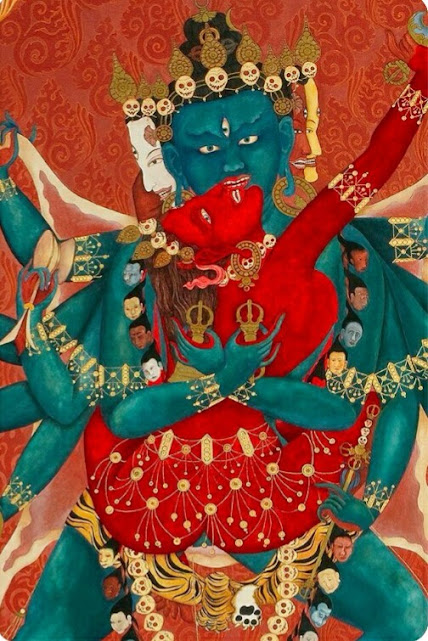Chittamani Tara Ritual - Tara the Wisdom Mother
Chittamani Tara is the Highest Yoga Tantra aspect of Green Tara, one of the most popular yidams in Tibetan Buddhism. Tara the Wisdom Mother is invoked in times of personal difficulties, family and business problems, and when there is a need for quick wisdom action. She manifests in twenty-one different forms to benefit all beings. In the aspect of Chittamani Tara, she responds quickly to the requests those who pray to her.
By performing the practice of Tara, one can collect a great deal of merit, avoid suffering and lower rebirth, receive initiation from innumerable Buddhas and quickly attain Enlightenment. Tara's blessing is especially effective and appropriate for a person who has many virtuous missions to accomplish.
Chittamani Tara (Green Tara), is a deity of Anuttarayoga Tantra, the highest yoga tantra. There are many inner obstructions to our mental development that manifest as external obstacles.
To be successful in our Dharma practice and to actualize the path to Enlightenment, we need to rely on a special Buddha like Green Tara. It is taught that the enlightened activity of all the Buddhas manifests in the form of Tara, who helps sentient beings successfully accomplish both temporary and ultimate happiness.
Anuttarayoga Tantra often translated as Unexcelled Yoga Tantra or Highest Yoga Tantra, is a term used in Tibetan Buddhism in the categorization of esoteric Tantric Indian Buddhist texts that constitute part of the Kangyur, or the 'translated words of The Buddha' in the Tibetan Buddhist canon.
In the Tibetan Buddhism, Anuttarayoga Tantra is the highest of four classes and is associated with the Mahamudra route to Enlightenment. Anuttarayoga Tantra literally means 'Unexcelled Union Continuity'.
Highest Yoga Tantra is the highest of the four classes of Tantra. According to the Sarma tradition, Highest Yoga Tantras are divided into Mother Tantras, Father Tantras and Non-dual Tantras.
Three outer classes -
- Kriya Tantra
- Charya Tantra
- Yoga Tantra
- And one inner class of tantra, which is called Highest Yoga Tantra.
The latter is divided into three:
- Father Tantras, such as the Guhyasamaja Tantra, the King of Tantras
- Mother Tantras, such as the Chakrasamvara Tantra
- Non-dual Tantras, such as Kalachakra
In the Nyingma tradition, the Highest Yoga Tantra corresponds to the three inner tantras of Mahayoga, Anuyoga and Atiyoga.
For (Donations for our Buddhist research and development)
Do you earnestly cherish our devoted work? Assuming this is the case, we are delighted that you are finding our blog useful and valuable. Would you consider making a donation for our Buddhist research and development?
We need your help to secure the future of scholarly interaction with Buddhism. Since our very first publication of Dharma works and activities in the year 2008, we had been effortlessly providing free distribution of Dharma posts and articles throughout the previous 13 years. We have exceptionally constrained supports and do not receive subsidized or funding from people in general.
Please help us and to develop our Dharma activities that will not only benefit you, but to all Dharma readers on the planet. Please consider showing your support. Your generosity will certainly help us to enhance our work and to accomplish for a better and brighter prospect to come.
Thank you for reading, may you find peace and great bliss. With your support it helps to spread the Buddha’s precious teachings and turning the Dharma wheels in the world.
Aspiration For Bodhichitta
For those in whom the precious Bodhichitta has not arisen
May it arise and not decrease
But increase further and further.
Dedication of Merit
By this merit may we obtain omniscience then.
Having defeated the enemies wrong-doings.
May we liberate migratory from the ocean of existence.
With its stormy waves of birth, old age, sickness and death.
*Note
I do not own or infringe any copyright of the picture(s).
Picture(s) courtesy and credit to the rightful distributors and or studios.
Picture(s) is/are intended for editorial use only.


































